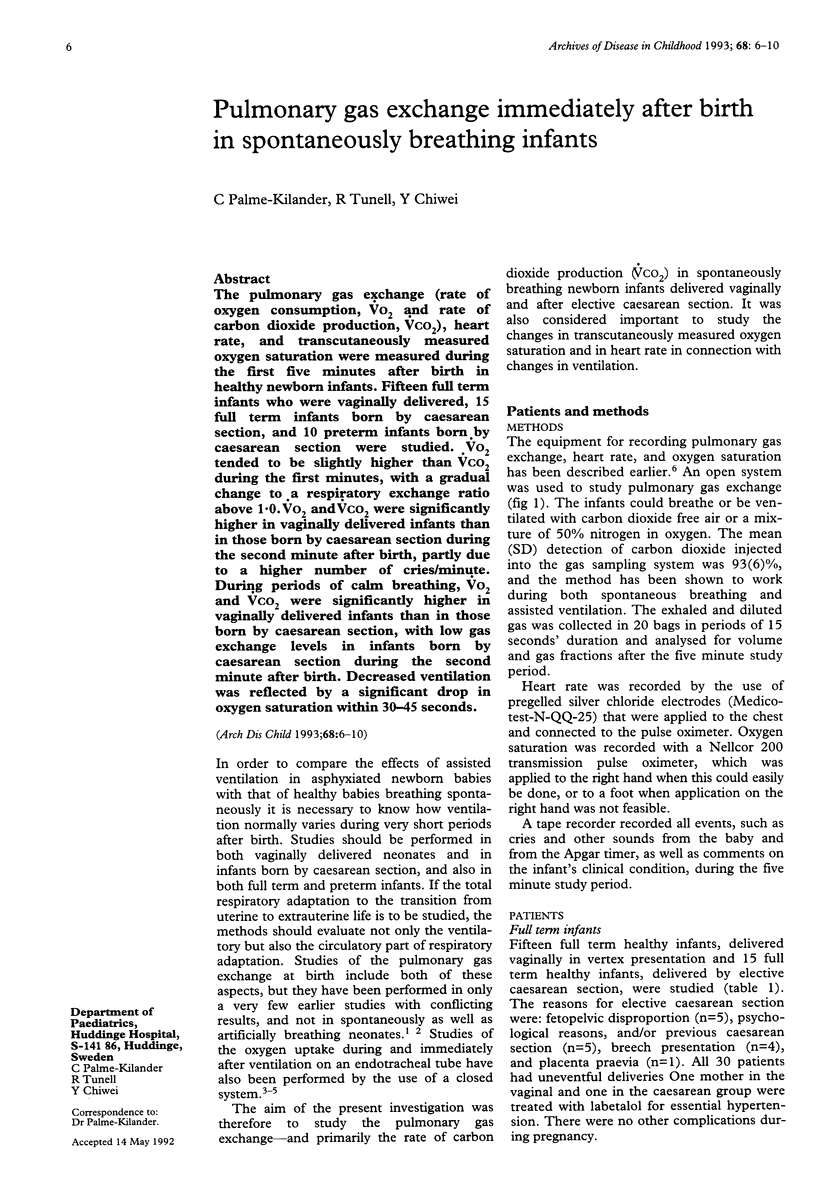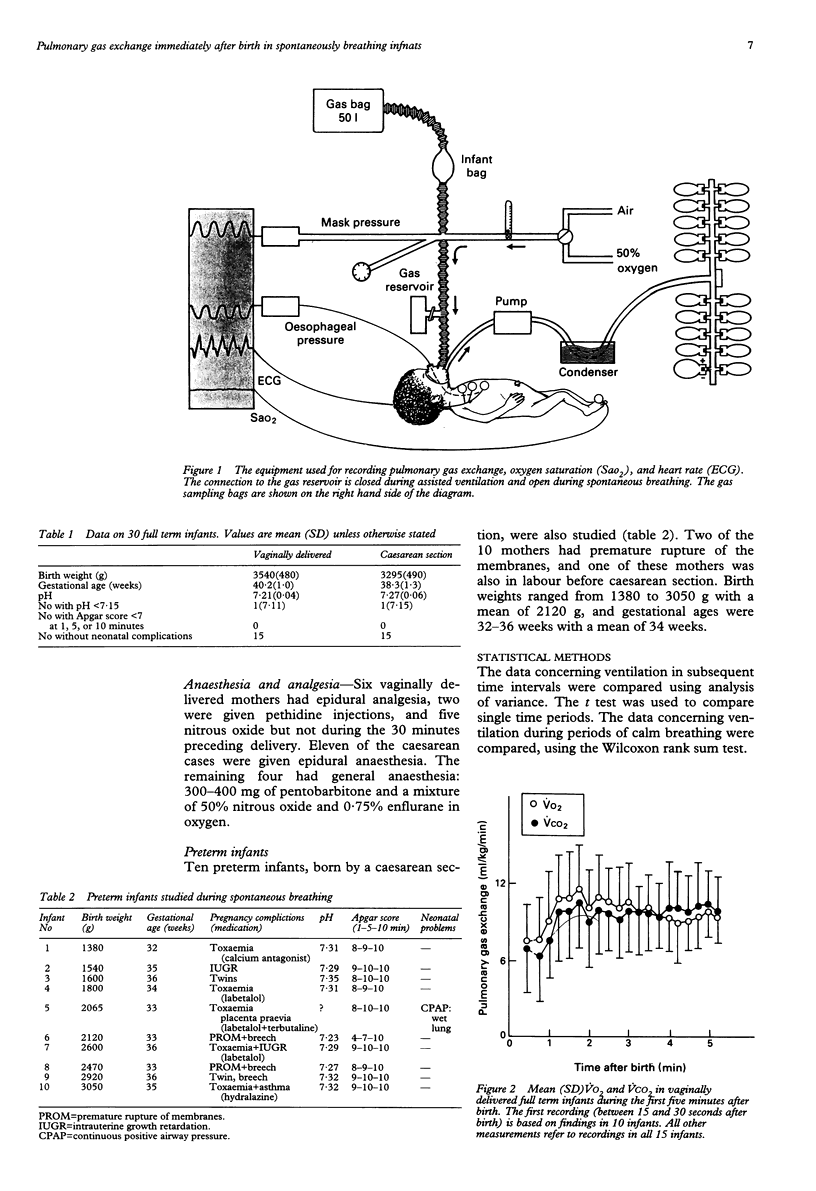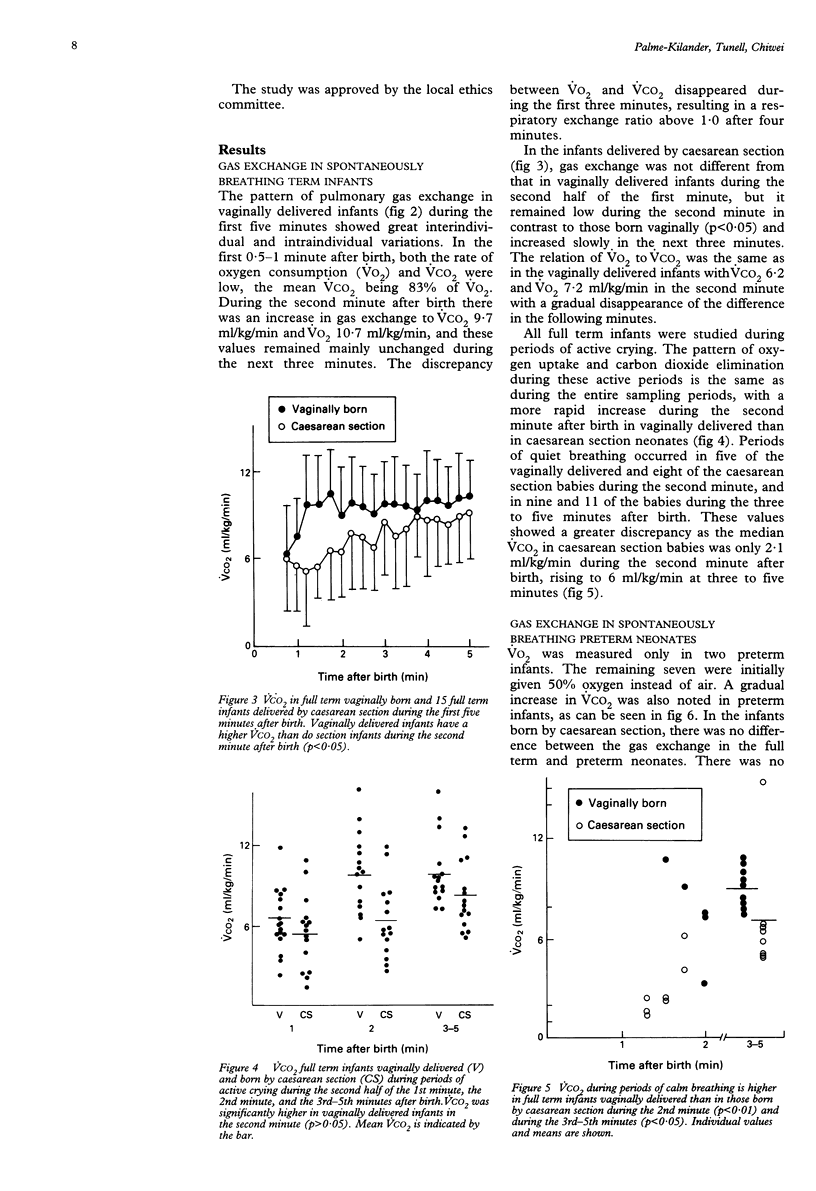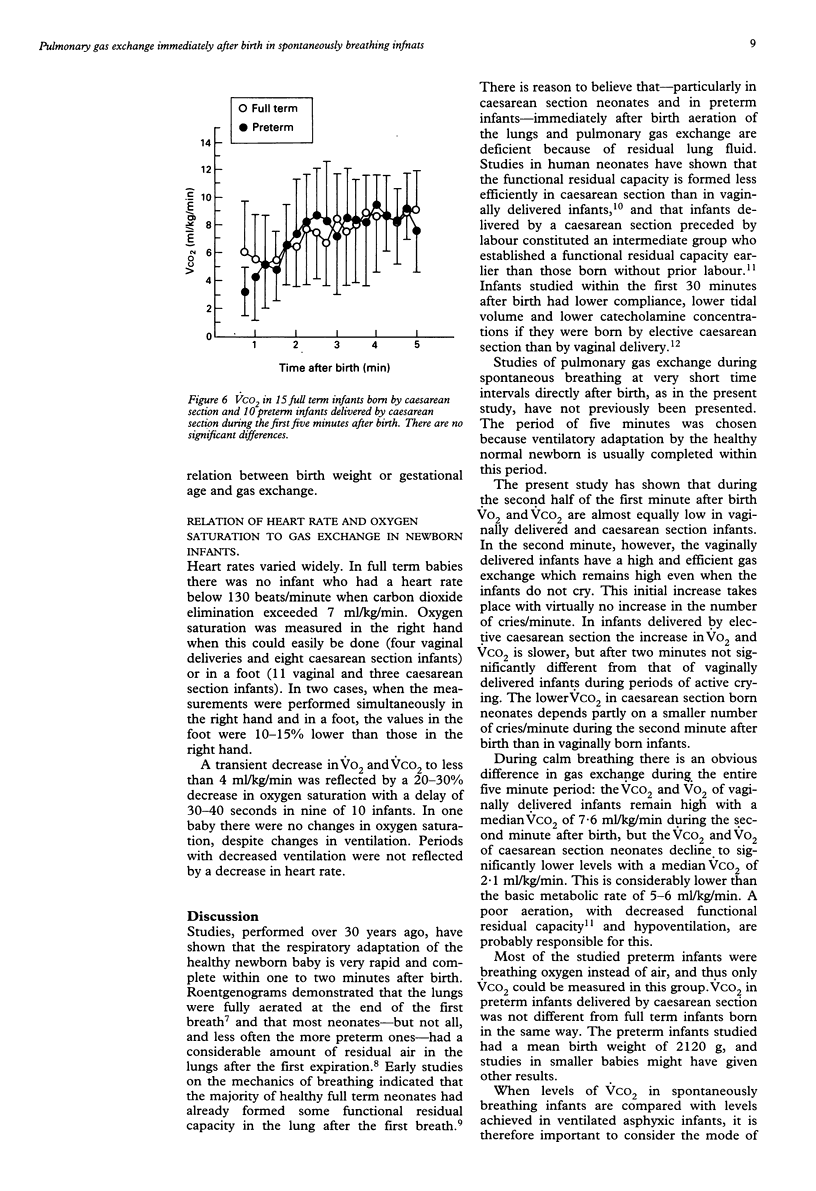Abstract
The pulmonary gas exchange (rate of oxygen consumption, VO2 and rate of carbon dioxide production, VCO2), heart rate, and transcutaneously measured oxygen saturation were measured during the first five minutes after birth in healthy newborn infants. Fifteen full term infants who were vaginally delivered, 15 full term infants born by caesarean section, and 10 preterm infants born by caesarean section were studied. VO2 tended to be slightly higher than VCO2 during the first minutes, with a gradual change to a respiratory exchange ratio above 1.0. VO2 and VCO2 were significantly higher in vaginally delivered infants than in those born by caesarean section during the second minute after birth, partly due to a higher number of cries/minute. During periods of calm breathing, VO2 and VCO2 were significantly higher in vaginally delivered infants than in those born by caesarean section, with low gas exchange levels in infants born by caesarean section during the second minute after birth. Decreased ventilation was reflected by a significant drop in oxygen saturation within 30-45 seconds.
Full text
PDF




Selected References
These references are in PubMed. This may not be the complete list of references from this article.
- Ditchburn R. K., Hull D., Segall M. M. Oxygen uptake during and after positive-pressure ventilation for the resuscitation of asphyxiated newborn infants. Lancet. 1966 Nov 19;2(7473):1096–1099. doi: 10.1016/s0140-6736(66)92192-1. [DOI] [PubMed] [Google Scholar]
- FAWCITT J., LIND J., WEGELIUS C. The first breath: a preliminary communication describing some methods of investigation of the first breath of a baby and the results obtained from them. Acta Paediatr Suppl. 1960 Mar;49(Suppl 123):5–17. doi: 10.1111/j.1651-2227.1960.tb05965.x. [DOI] [PubMed] [Google Scholar]
- Faxelius G., Hägnevik K., Lagercrantz H., Lundell B., Irestedt L. Catecholamine surge and lung function after delivery. Arch Dis Child. 1983 Apr;58(4):262–266. doi: 10.1136/adc.58.4.262. [DOI] [PMC free article] [PubMed] [Google Scholar]
- Hey E., Kelly J. Gaseous exchange during endotracheal ventilation for asphyxia at birth. J Obstet Gynaecol Br Commonw. 1968 Apr;75(4):414–424. doi: 10.1111/j.1471-0528.1968.tb00138.x. [DOI] [PubMed] [Google Scholar]
- Hull D. Lung expansion and ventilation during resuscitation of asphyxiated newborn infants. J Pediatr. 1969 Jul;75(1):47–58. doi: 10.1016/s0022-3476(69)80100-9. [DOI] [PubMed] [Google Scholar]
- LIND J. Initiation of breathing in the newborn infant. J Ir Med Assoc. 1962 Apr;50:88–93. [PubMed] [Google Scholar]
- Meier-Stauss P., Bucher H. U., Hürlimann R., König V., Huch R. Pulse oximetry used for documenting oxygen saturation and right-to-left shunting immediately after birth. Eur J Pediatr. 1990 Sep;149(12):851–855. doi: 10.1007/BF02072072. [DOI] [PubMed] [Google Scholar]
- Pribylová H., Znamenácek K. The effect of body temperature on the level of carbohydrate metabolites and oxygen consumption in the newborn. Pediatrics. 1966 May;37(5):743–749. [PubMed] [Google Scholar]
- Vyas H., Milner A. D., Hopkin I. E., Falconer A. D. Role of labour in the establishment of functional residual capacity at birth. Arch Dis Child. 1983 Jul;58(7):512–517. doi: 10.1136/adc.58.7.512. [DOI] [PMC free article] [PubMed] [Google Scholar]
- Vyas H., Milner A. D., Hopkins I. E. Intrathoracic pressure and volume changes during the spontaneous onset of respiration in babies born by cesarean section and by vaginal delivery. J Pediatr. 1981 Nov;99(5):787–791. doi: 10.1016/s0022-3476(81)80412-x. [DOI] [PubMed] [Google Scholar]


